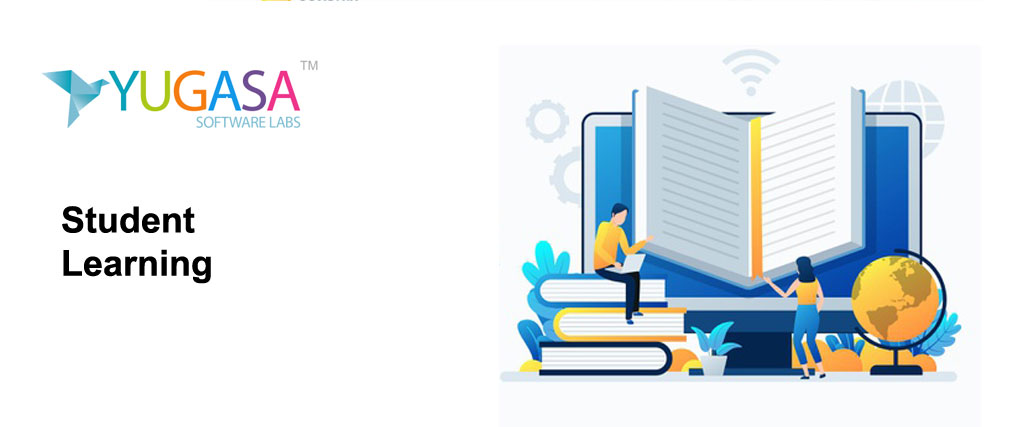How Is Technology Impacting Student Learning?

Student Learning: How is technology affecting learning for students? Some post-secondary pupils see technology in the classroom as a distraction. Even if it does not ban the use of mobile or social media in school, it might be a bit more unpleasant to see technology as the required bad.
Rather than only tolerating it, however, instructors should use the power of digital tools, software, and instruments to improve interaction, promote teamwork, inspire creativity, and enhance student education.
Educational technology in and of itself does not contribute to successful education and learning. It also needs a guide (the educator) and a curriculum purpose. So it takes some work so techniques to incorporate it into your course content effectively. But technology can be converted from a nuisance into an important teaching tool if used deliberately.
Here are a few answers to how technology impacts learning for Student Learning and the reasons why educators should use the technology in the classroom and outside.
Technology Provides Better Access to Resources - Student Learning
We have access to information 24 hours a day with an Internet connection. With its most up to date edition, we can find almost anything online. It ensures students access to everything from research materials and educational software to digital edutainment and open tools from world-renowned universities. Nonetheless, they can need advice as to how to locate reliable tools and encouragement to make sure that when they make effective use of them.
Students may also complement their learning by contacting community groups and virtual communities in real-time, or by collaborating with resources like wikis and cloud-based applications on group projects. And instructors can give you access, through learning management systems, to course materials (and extra resources), or by providing each learner with access to course-specific software .. Mixed learning – a combination of classroom technology and person-to-person learning – is a common way to manage that.
Technology can Improve Student Engagement
Education technology will make learning more immersive and collaborative — allowing students to participate in learning content better. They learn by doing, instead of memorizing facts. This may be as easy as taking an interactive questionnaire in class, taking part in technology-enabled group discussions or playing educational games, carrying out virtual laboratory science experiments, or taking a virtual field trip.
Nonetheless, it needs to be fully interactive to make it truly engaging. It's no different to doing algebra on a machine than using pencils or a pad of paper. Yet it is an entirely different ballgame to use expanded reality to simulate mathematical problems. Interactivity is a great learning environment for certain students.
The teachers have infinite possibilities: To show how the hurricane develops by using simulation software, to use virtual reality to perform medical procedures. "As a number of medical schools are becoming more interactive, students find an effective way to study complicated subjects, such as anatomy, which can be easily learned in practice," writes Chris Hayhurst for EdTech Magazine."
The classroom no longer has walls because of technology. There are no more barriers to the learning environment. And a variety of subject experts may provide guidance, in addition to the person who teaches the course.
"Students in a rural U.S.'s classroom, for example, will find out about the Arctic by joining a regional scientist team expedition, reading the blog posts of scientists, viewing photographs, e-mailing scientists questions and even communicating directly via a video meeting with scientists. Students in other schools in other states will share what they know with students on the same expedition." according to technology in education.
Technology can Encourage Self-paced Learning - Student Learning
Students struggling to learn new ideas will soon be behind their peers. In a traditional schoolroom. Students, however, can progress at their own pace with online assignments. Individuals who need more time or additional support may practice with guided activities or extra training outside the classroom. Likewise, students who want a challenge can.
Thanks to the continued existence of technology, students can access information online anytime they need it, and teachers can find out which students will need additional assistance. The process of autonomous learning also lets students learn digital literacy and skills from the 21st century, which are useful when joining the workforce.
Technology can Promote Innovative Teaching Techniques
Technology changes the manner in which we view knowledge but also how we teach it. The teacher is less of a "sage on-screen" and more of a "guide on the side." Technology opens up possibilities for teaching creativity from online course materials to video-recorded lectures: from working together with communities to revolving and hybrid classrooms. Instructors may also use classroom answer systems to assess student comprehension in real-time of the course material and to change the pacing or content required.
Read More: TOP 6 EDTECH TRENDS FOR YOU SHOULD KNOW IN 2020
Conclusion
Although technology also presents itself as a threat — and limits do — it is a new way for students to communicate and deal with course material in your teaching practice. Via technology, teaching is no longer limited to the classroom walls. YouTube videos and social media should not distract; they can form part of your material for the course. Mathematics is simple: it adds to the learning results.
